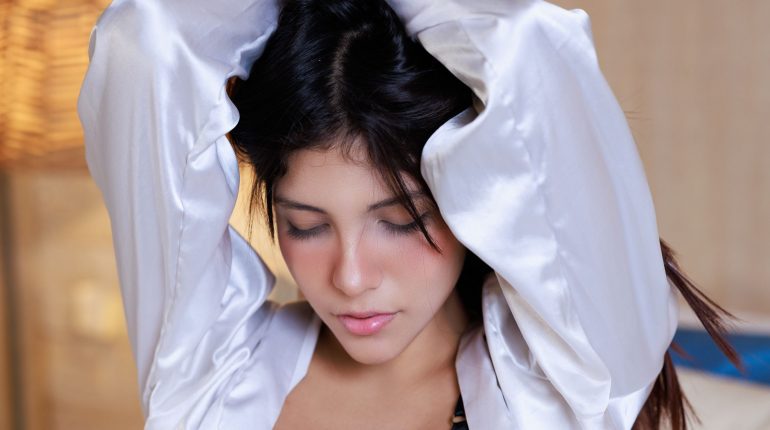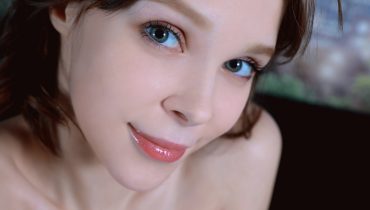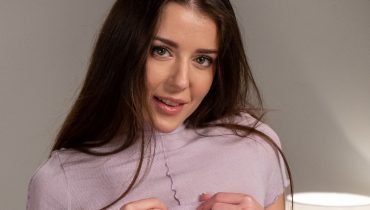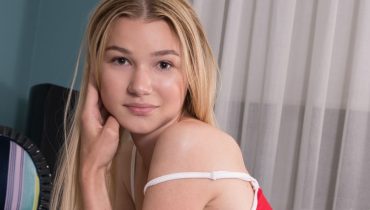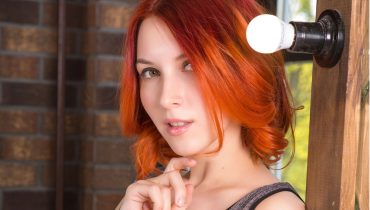For most of her career, Leah Anderson believed she had a “night owl” personality. She worked as a digital illustrator, often losing herself in midnight sketching sessions under the cold glow of her tablet screen.
For years she assumed her difficulty falling asleep, her morning grogginess, and her inconsistent mood were simply the price she paid for being creative at night. But as she reached her mid-thirties, something changed. The late nights that once felt energizing began turning into restless hours. She would climb into bed exhausted and stay there awake, mind buzzing, eyes strangely alert even in the dark.
One evening, after a particularly long design session, Leah noticed something unsettling. Even though she stepped away from her screen forty minutes before bed, she still felt as if a light was shining directly into her eyes from the inside.
She described it as a kind of internal brightness—a strange wakefulness that her body could not switch off, no matter how ready she felt for rest. It was the first time she realized that perhaps her sleep problems were not simply a personality quirk. Perhaps they were physiological.
What Leah eventually discovered is something modern adults are only beginning to understand: blue light—especially artificial blue light from screens—can profoundly disrupt the body’s sleep architecture. It can delay melatonin, shift circadian timing, elevate alertness at night, and fracture the quality of overnight recovery. Her journey toward understanding this was not instant, nor was it a simple matter of “just avoiding screens.” Instead, it required her to see blue light not as a lifestyle inconvenience but as a biological force with real, measurable effects.
How Leah realized blue light was at the center of her sleep problems
Leah’s turning point came when her doctor suggested she keep a sleep diary. For two months, she recorded her nighttime behaviors: when she stopped work, when she dimmed the lights, how long she scrolled on her phone, and when she finally attempted sleep. She also paired this diary with her wearable’s sleep tracker. The patterns were unmistakable. On nights when she worked late on her tablet or checked emails past 11 p.m., her sleep onset stretched dramatically—sometimes taking more than 60 minutes. On nights when she avoided screens after 9 p.m., she fell asleep almost effortlessly.
Still, Leah was skeptical. She had heard plenty of superficial advice about reducing screen time, but she wanted to understand what was actually happening inside the brain. Why did her body stay alert long after she stepped away from her devices? Why did certain kinds of light feel harsher at night than others? And why did she wake up tired even when she managed eight hours?
Her research led her to a growing body of scientific literature explaining the neurobiological effects of blue-wavelength light. One foundational resource was an article from Harvard Health Publishing, which explained how blue light suppresses melatonin far more strongly than other wavelengths and can shift circadian rhythms by several hours. For Leah, discovering this research was like finally being handed the missing map of her own body. (Nguồn tham khảo uy tín: Harvard Health – Blue Light and Sleep)
The science she uncovered: why blue light keeps the brain awake
The more Leah read, the more she understood that blue light was not metaphorical; it was neurological. Humans evolved to respond to sunlight—particularly blue wavelengths—as a signal for daytime wakefulness. When artificial blue light enters the eyes at night, the brain interprets it as daylight, triggering biological responses meant to keep the body alert.
The suppression of melatonin was only one part of the story. Her specialist explained that blue light communicates with a cluster of retinal cells known as intrinsically photosensitive retinal ganglion cells. These cells send light information to the suprachiasmatic nucleus—the brain’s master clock. When blue light hits these cells late at night, it sends a message that disrupts the entire sleep-wake rhythm. This shift doesn’t simply cause difficulty falling asleep; it can alter hormone timing, nighttime heart rate, and the depth of sleep stages like slow-wave sleep.
Leah began noticing small details she had never considered before. The overhead kitchen lighting she used during late dinners felt overly stimulating. The white LED bulb in her office lamp made her feel strangely energized late at night even when she wasn’t using screens. The glow from her tablet felt harsher than the warm lamplight she used for reading. Slowly, she began piecing together an invisible puzzle: the modern environment was flooding her biology with daytime signals long after sunset.
The moment everything “clicked” for her
One night, after days of careful experiment, Leah turned off every overhead light in her apartment at 7:30 p.m. She relied only on warm lamp lighting and avoided all screens after 9 p.m. What happened shocked her. She fell asleep within twenty minutes—something she hadn’t experienced in years. Even more surprising was how she felt the next morning. The heaviness behind her eyes was gone. The mental dullness she woke with most mornings had softened. Her body felt refreshed in a way she had forgotten was possible.
This wasn’t a miracle night. It was biology behaving normally again.
How blue light alters nighttime physiology in ways we don’t feel immediately
Leah discovered that the effects of blue light are not always obvious in the moment. You can stare at a screen late at night and feel tired—but your brain may still be alert. Blue light can delay melatonin by 90 minutes or more, but the body doesn’t send a signal like “Warning: melatonin suppressed.” Instead, the alertness creeps in subtly. You feel “awake but tired,” as if someone turned on a light switch inside your skull but forgot to tell you.
The delayed melatonin means the body enters sleep later than intended. But even once you fall asleep, the disruption does not stop. Studies show that late exposure to blue light can reduce deep sleep, the stage responsible for restoration of muscle tissue, immune regulation, and emotional processing. It can also increase nighttime awakenings, alter REM proportions, and raise overnight heart rate.
For Leah, this explained why she felt tired even on nights when she managed “enough hours.” She wasn’t entering the deeper phases long enough for her nervous system to recover. Her eyes had adjusted to blue light over the years, but her circadian clock had not.
The changes Leah made—and why they worked
Instead of treating blue light as something to be avoided rigidly, Leah reframed it as something to be managed intelligently. The goal wasn’t to eliminate screens from her life; her work depended on them. The goal was to align screen exposure with her biology. She realized that timing mattered far more than total avoidance. Blue light was stimulating in the evening but harmless during the day.
She shifted her heaviest computer work earlier. She adjusted her apartment lighting to warm-toned bulbs, which emit less blue wavelength. She set her devices to Night Shift mode automatically at sunset, but more importantly, she limited screen intensity—not just color. She discovered that brightness was just as influential as hue. A dim warm screen was vastly different from a bright warm one.
What surprised her most was how little willpower it took once the environment changed. She no longer struggled with the sharp mental alertness she once felt at night. Her body seemed to exhale more easily, as if someone had finally removed a constant neurological irritant. Sleep became less of a battle and more of a return to equilibrium.
How supplements helped her repair from years of overexposure
While light management was the foundation of her recovery, Leah also incorporated supplements to support the systems that blue light had disrupted over years. She chose them not as “sleeping pills” but as agents that helped restore balance—especially in her stress hormones and nighttime physiology.
Magnesium glycinate helped her rebuild the sense of relaxation she had lost, softening the tension behind her eyes and in her neck. L-theanine supported the mental quieting that blue light often overrode. Tart cherry extract provided a gentler melatonin rhythm without the overshooting effect she had felt from synthetic melatonin products. Omega-3 reduced inflammation that had accumulated from chronic sleep fragmentation. None of these supplements forced sleep, but each of them restored a piece of the internal machinery that blue light had strained over the years.
The emotional shift that followed
Once Leah understood the physiological effects of blue light, she stopped blaming herself for being “bad at sleeping.” She stopped thinking of her nights as personal failures and started seeing them as a mismatch between modern tools and ancient biology. The self-criticism dissolved. She no longer felt defective for being alert at midnight; she realized her nervous system was behaving exactly as it was built to behave when exposed to light designed for daytime.
This emotional reframing changed her relationship with sleep. What had once been a nightly struggle turned into a series of predictable adjustments. If she respected her internal clock, it cooperated. If she overstimulated it, it resisted. The dynamic stopped feeling mysterious.
Leah’s perspective today
Today, Leah sees blue light less as an enemy and more as a tool. Within the right hours, it enhances concentration and alertness; within the wrong hours, it disrupts sleep chemistry. With better timing, better lighting strategies, and a deeper understanding of her biology, she now falls asleep with a steadiness she once thought she had lost forever.
“It wasn’t that my body was broken,” she said. “It was that my environment was louder than my biology.”
